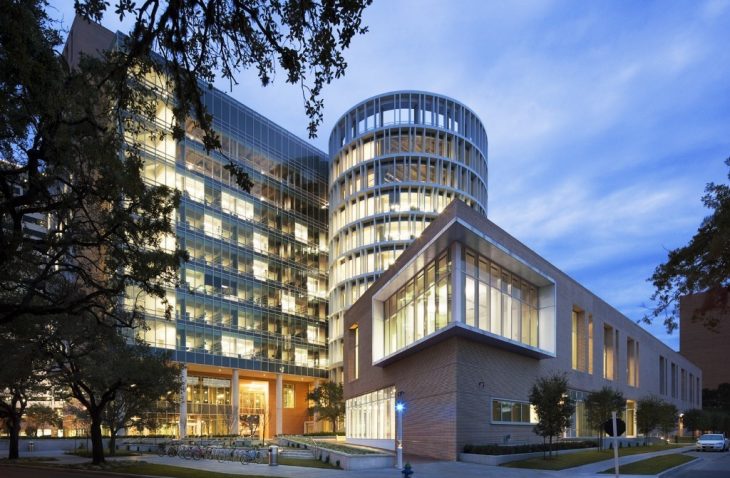BioScience Research Collaborative

Rice University commissioned the BioScience Research Collaborative (BRC) to enable researchers and physicians from the Texas Medical Center to partner with Rice University scientists and engineers on bioscience and biotechnology research. At 477,000–sf and 10 stories tall, the BRC is the largest academic building in Rice’s history. The building base houses a vivarium, 280-seat auditorium, 100-seat seminar room, classrooms, 10,000–sf of retail and restaurant space, and three levels of underground parking.
Eight floors of efficient research laboratories top the base. A cylindrical element, the “collaborative hub,” attached to the research tower serves as the center of intellectual and social exchange in the building. Each floor of the hub has an open plan and contains student workstations, a double-height lounge, and an open staircase, encouraging social interaction between floors. Principal investigators occupy rows of offices adjacent to the collaborative hub. Researchers share certain equipment and resources in a “scientific marketplace” at the base of the hub. The baseline plan also includes two stories of shell space on top of the tower to allow easy and rapid expansion as the project grows. The base platform is also designed to hold a second research tower, which could add up to another 150,000–sf.
The design team responded to an accelerated schedule by delivering the excavation package at 50 percent schematic design. The foundation package for the building was completed at the beginning of design development, requiring close coordination among the team. The deep excavation of the sub-grade parking required a soldier pile foundation around the project site perimeter, comprised of 450 reinforced 30-inch piles. The building structural system is a cast-in-place concrete frame. Designers gave special consideration to vibration sensitivity for the lab floors, plus the heavy loading requirements of the laboratory mechanical system.
The facility is LEED Gold certified.







